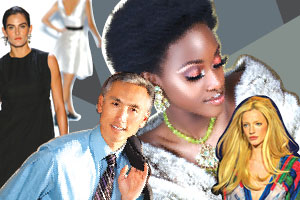profile/6918Snapchat-1936236557.jpg
Omoobalowu1

Beauty
~1.6 mins read
 There’s no getting around it. In this world, you’re better off being good-looking. At all ages and in all walks of life, attractive people are judged more favorably, treated better, and cut more slack. Mothers give more affection to attractive babies. Teachers favor more attractive students and judge them as smarter. Attractive adults get paid more for their work and have better success in dating and mating. And juries are less likely to find attractive people guilty and recommend lighter punishments when they do.
There’s no getting around it. In this world, you’re better off being good-looking. At all ages and in all walks of life, attractive people are judged more favorably, treated better, and cut more slack. Mothers give more affection to attractive babies. Teachers favor more attractive students and judge them as smarter. Attractive adults get paid more for their work and have better success in dating and mating. And juries are less likely to find attractive people guilty and recommend lighter punishments when they do.Many factors can play into personal attractiveness — the way you dress, the way you act, the way you carry yourself, even things that are hard or impossible to change, like social status and wealth, race, and body size and shape. But the first thing we notice when we meet someone is their face. There are faces that launch a thousand ships, and faces that only a mother could love, and we are supremely attuned to tell the difference. The brain, among its many other functions, is a beauty detector.
The brain is such a good beauty detector, in fact, that it can judge the appeal of a face before you’re aware you’ve even seen one. When participants in a recent study were presented with attractive and unattractive faces for only 13 milliseconds, they were able to judge the faces’ attractiveness accurately (that is, in accordance with experimenters’ ratings), even though they were not consciously aware of the stimuli and felt like they were just guessing (Olson & Marshuetz, 2005).
There is no doubt that beauty (which here means both male and female attractiveness) is to some extent in the eye of the beholder, but across individuals and across cultures there is nevertheless considerable agreement about what makes a pretty or handsome face, and the evidence strongly counters the conventional wisdom that attractiveness preferences are mainly acquired through life experience. For one thing, the beauty bias is already present in infancy. Six-month-olds prefer to look at the same relatively attractive faces that adults do (Rubenstein, Kalakanis, & Langlois, 1999).
Advertisement

Link socials
Matches
Loading...
